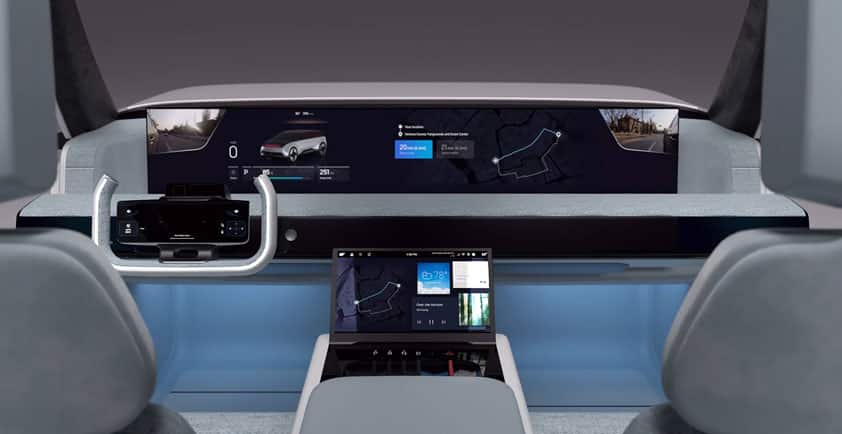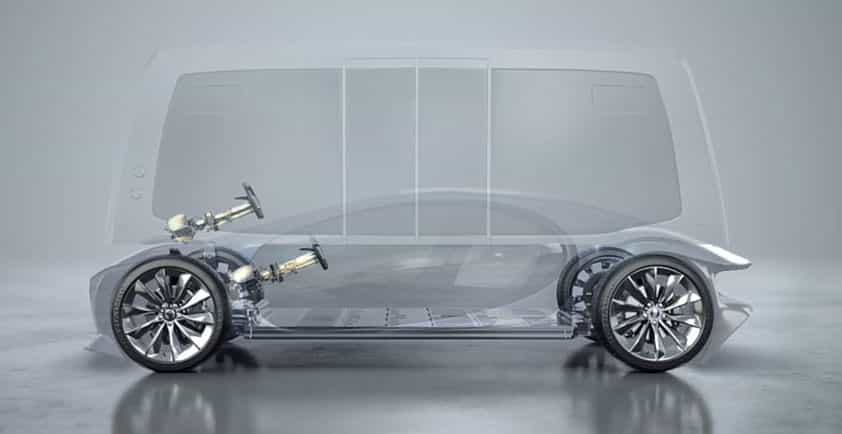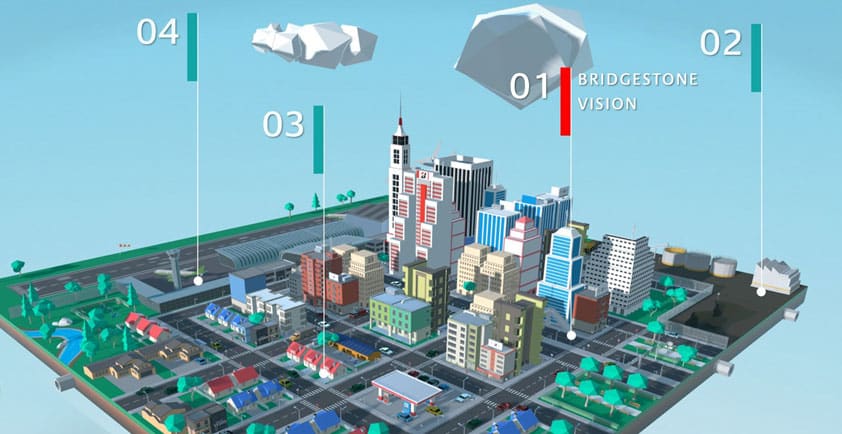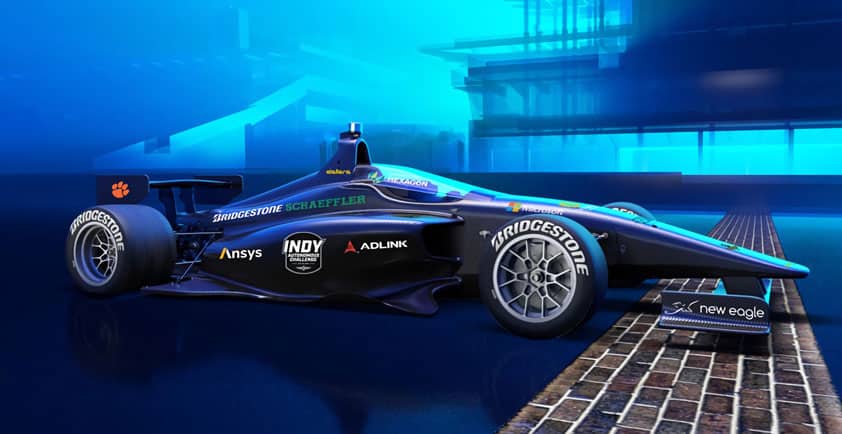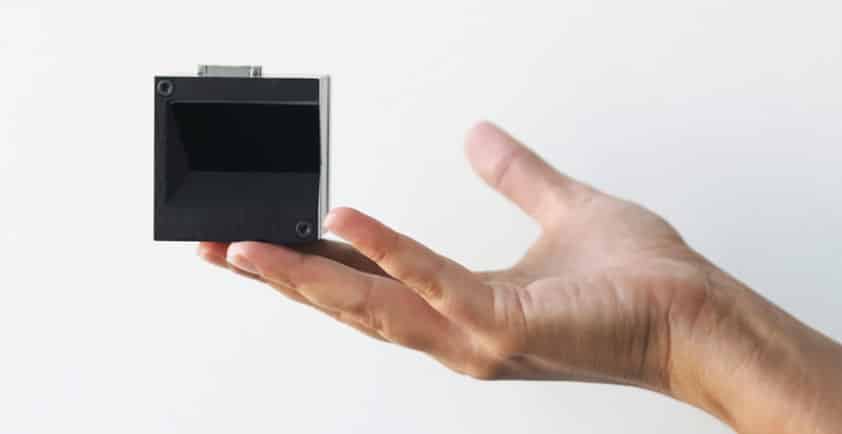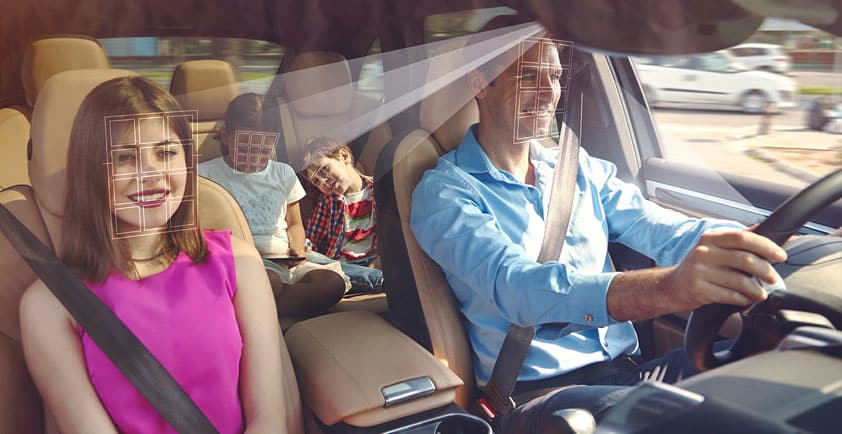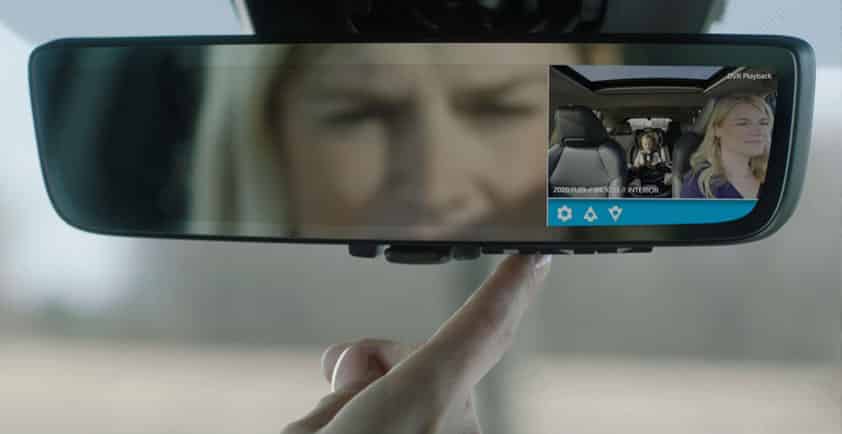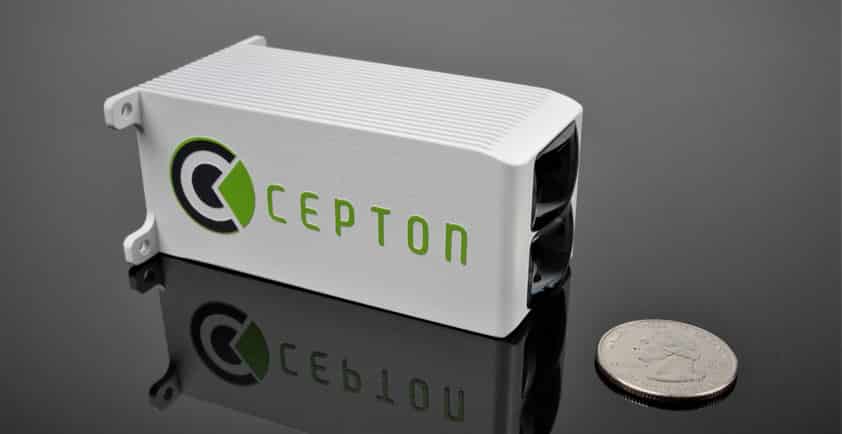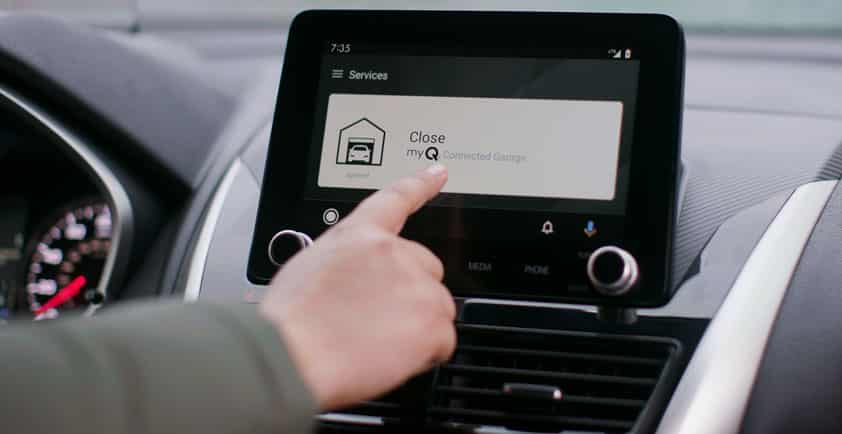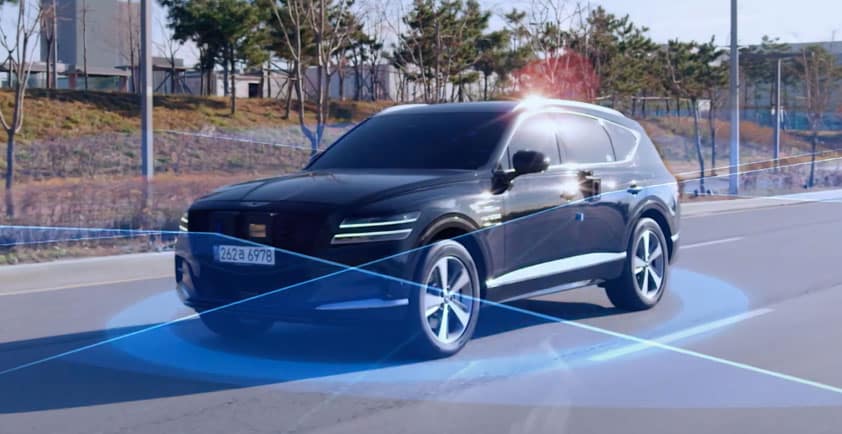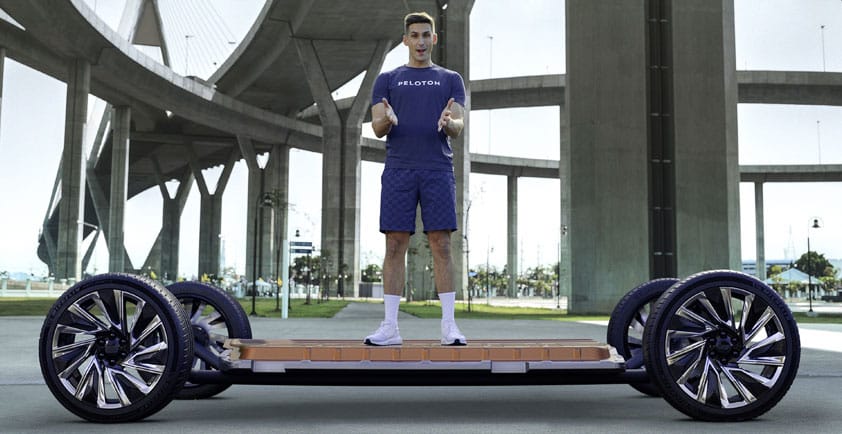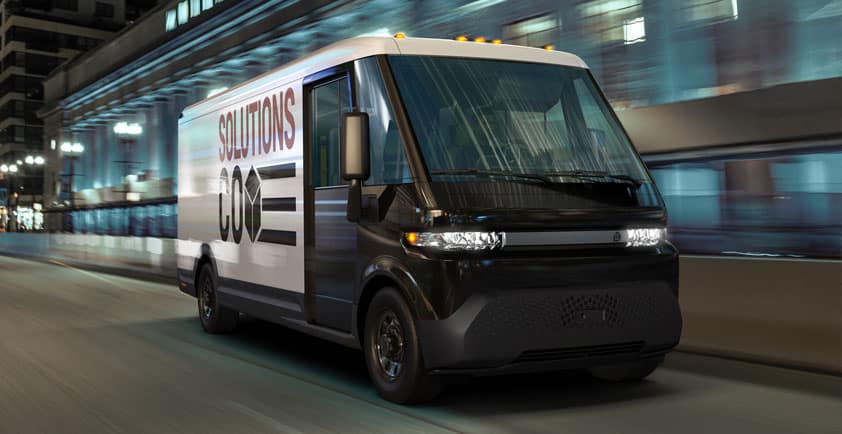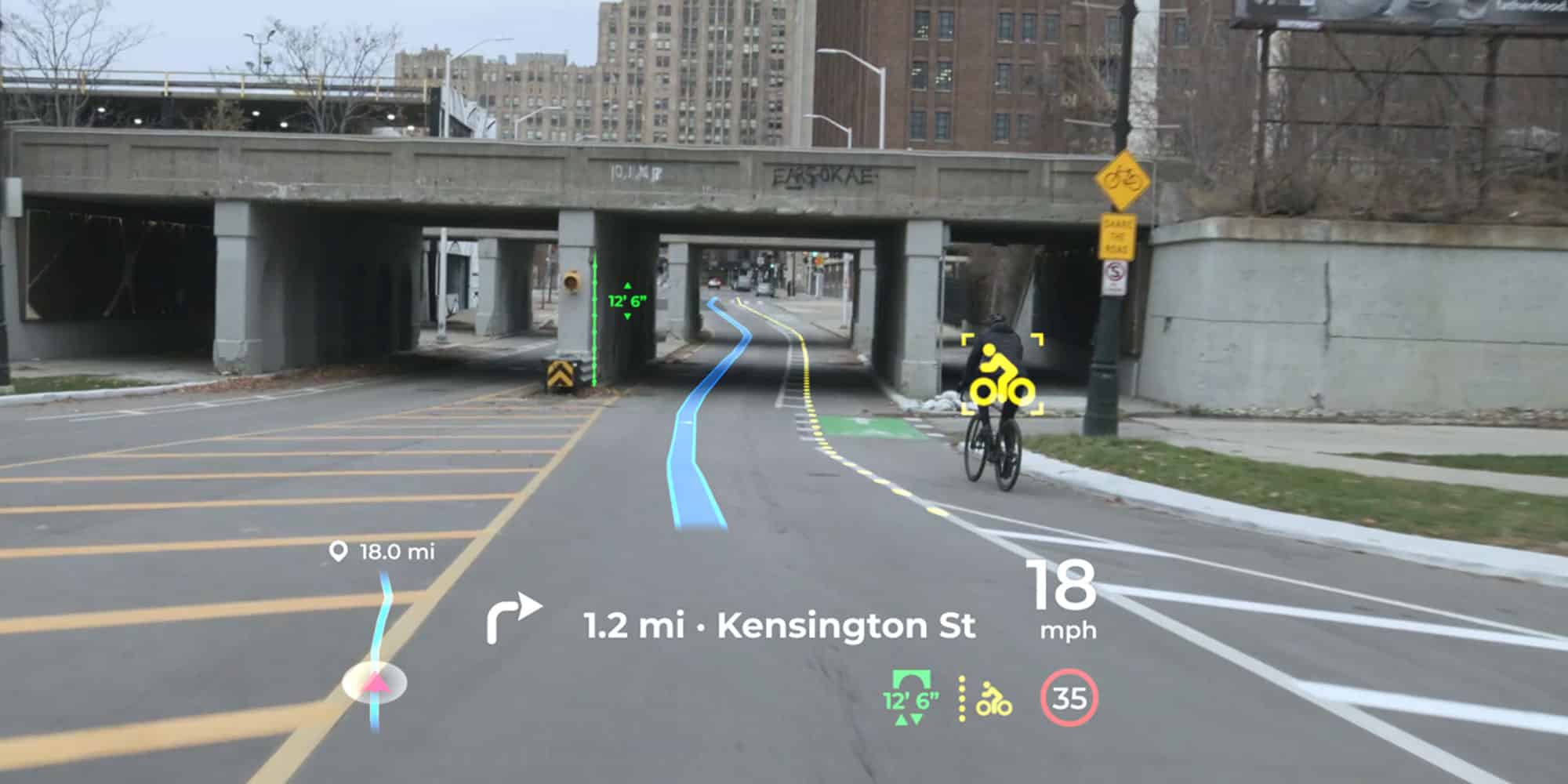
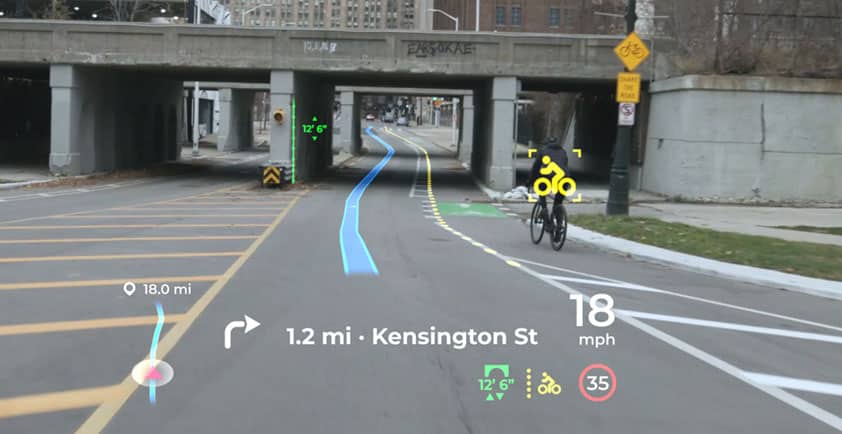
PANASONIC AUTOMOTIVE BRINGS EXPANSIVE, ARTIFICIAL INTELLIGENCE-ENHANCED SITUATIONAL AWARENESS TO THE DRIVER EXPERIENCE WITH AUGMENTED REALITY HEAD-UP DISPLAY
PEACHTREE CITY, GA – Today at CES 2021, Panasonic Automotive Systems of America (Panasonic Automotive) is pleased to introduce its new Augmented Reality (AR) HUD. A leader in projection generation innovation, Panasonic utilizes its latest advances in optics, volume optimization and imaging technology, combined with AI technology from its SPYDR cockpit domain controller to render near-field and far-field content for vehicle information (like speed), object and pedestrian detection, and mapping / route guidance, for a seamless, more engaged and informed driver experience.
“The HUD market is one of the fastest growing categories in mobility, but traditional HUDs only cover a small section of the road,” said Scott Kirchner, president Panasonic Automotive and executive director, Panasonic Smart Mobility. “Panasonic’s AR HUD solutions cover more of the roadway, with traditional cluster content like speed and fuel in the near field as well as 3D overlays in the far field, showing navigation and other critical driver data mapping spatially to the road ahead. And in a future with more self-driving vehicles, our AR HUD could provide an important added level of comfort and assurance for AV passengers as well.”
Panasonic’s AR HUD system projects 3D, AI-driven key information into the driver’s line of sight to help reduce driver distraction and potentially increase safety on the road. Panasonic’s AR HUD development utilizes a PRIZM process to address all aspects of users’ needs today, tomorrow and in the future:
> Precise placement – Optimal image positioning
> Reflection – AI smart optical graphic road overlays for object / sign detection
> Intuitive – Discriminates / prioritizes user focus on what is ahead, e.g. is that a deer or a box in the road?
> Zonal- UX optimized field-of-view organizationally displays objects along the road
> Mission Control - Dynamic imaging that brings visibility and the roadway together
The key features of the new AR HUD include:
> Eye tracking technology - Projects information at driver’s level of sight based on driver’s eye position, eliminating a potential mismatch between the projected image when the driver moves their head
> Advanced optics - Advanced optical design techniques provide expanded field-of-view (beyond 10 by 4 degrees) for virtual image distance of 10m or greater; detects pedestrians and objects through enhanced low light and nighttime view; tilted virtual image planes adjust visibility of objects in the driver’s field of view; embedded camera system allows discrete monitoring for the driver’s eye location.
> AI navigation accuracy - AI-driven AR navigation technology detects and provides multi-color 3D navigation graphics that adjust with moving vehicle’s surroundings, displaying information like lane markers and GPS arrows where turns will occur and sudden changes such as collisions or cyclists in one’s path
> Vibration control - Panasonic’s proprietary camera image stability algorithm enables AR icons to lock onto the driving environment regardless of the bumpiness of the road
> Real-time situational awareness - Driving environment updates occur in real-time; ADAS, AI, AR environment information updates in less than 300 milliseconds
> 3D imaging radar - Sensor-captured full 180-degree forward vision up to 90 meters and across approximately three traffic lanes
> Compact size - Efficient compact packaging to fit any vehicle configuration
> 4K resolution - Crisp, bright 4K resolution using advanced laser and holography technology, with static near-field cluster information and far-field image plane for AR graphic overlay
Panasonic’s strategic collaborations with emerging tech innovators provide added depth and breadth to the data-driven visuals in Panasonic’s AR HUD: striking, dual plane, high-resolution laser holography is by Envisics, developers of a patent-protected, dynamic holographic platform that enables true holography across multiple mobility applications; and the 3D localization technology and AI navigation and situation awareness analytics is from Phiar, developers of a patent-protected spatial-AI, AR navigation platform.
PANASONIC INTRODUCES WIRELESS CHARGING FOR EVERY VEHICLE
PEACHTREE CITY, GA – Today at CES 2021, Panasonic Automotive Systems Company of America (Panasonic Automotive) announced two variants of in-vehicle wireless charging technology (moving coil and static coil.) Both of these variants will provide efficient in-vehicle charging that meet or exceed most current in-vehicle charging systems. The average American owns ten connected devices per household and many of those devices travel with us in the vehicle on short or long trips. As a result, the need for fast, efficient charging must also be readily accessible in a vehicle. With customers utilizing apps, navigation and music that require constant power, the demand is high for having reliable in-vehicle sources for efficient charging of devices. However, the majority of vehicle charging systems remain wired or tethered. Panasonic Automotive’s wireless charging system aims to be a more accurate and more efficient way to charge – to be accessible in any vehicle without the hassle of first plugging in.
Panasonic’s wireless charging technology highlights include:
Exclusive Detection Technology (Moving coil charge variant)
Synchronizes - Panasonic patent pending tracking technology targets one’s device. The wireless charging coil moves into the optimum position to align with the mobile device’s charging coil and quickly begins to charge wirelessly. In addition, this moving coil technology has better coupling capability vs. other wireless charging systems. (Note: devices must be wirelessly charging compatible)
Charging Performance Rivals Wired Systems (Moving coil charge variant)
Efficient Power Delivery - With 15W of charging power, Panasonic’s wireless technology has one of the fastest charging times in the industry and rivals that of wired / tethered systems
Features:
Charging Performance – At 15W, one of the highest rates of charge in the industry for a wireless charging system
Detection Accuracy - Technology to more accurately align with your device (moving coil variant only)
Smart Alignment – Patent pending tracking technology as the moving coil will optimize position for charging (moving coil variant only)
Thermal Management - Better thermal trajectory range across longer periods of charging time vs. other systems (moving coil variant only)
NFC BT / Wi-Fi Connected - While device is charging, the ability to make/ receive a phone call and app use continue run as normal (both static / moving coil variants)
Charge Standard To follow Qi 1.3 charging standard (both static / moving coil variants)
This unique charging technology proves to be convenient, efficient, and much needed technology that integrates with any in-vehicle platform.
